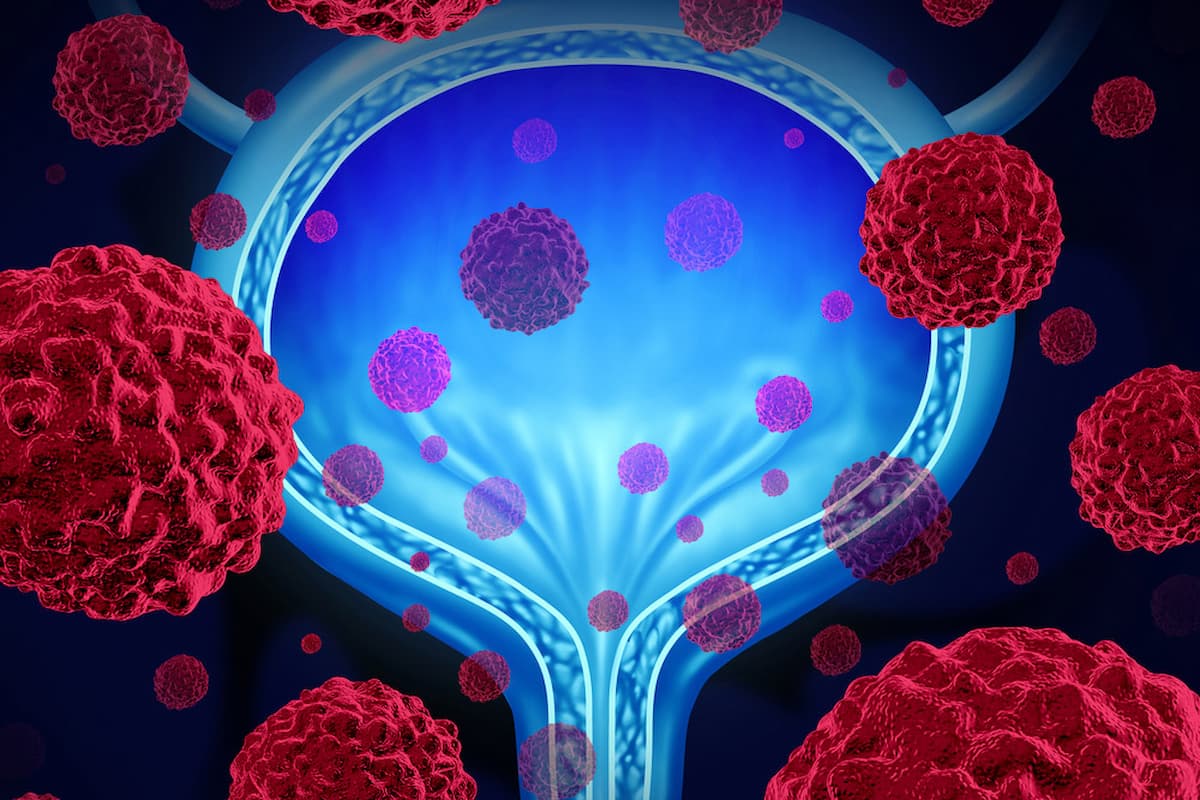Upfront MRI Staging Improves Bladder Cancer-Specific Survival
Using multiparametric MRI for initial staging, then cystoscopic biopsy, improves bladder cancer-specific survival compared with transurethral resection of bladder tumor staging.
Using multiparametric MRI for initial staging, then cystoscopic biopsy, improves bladder cancer-specific survival compared with transurethral resection of bladder tumor staging.

Initial staging using flexible cystoscopic biopsy and multiparametric magnetic resonance imaging (mpMRI) was associated with an improvement in bladder cancer-specific survival compared with standard transurethral resection of bladder tumor (TURBT) staging in new cases of muscle-invasive bladder cancer (MIBC). These findings come from the final analysis of the phase 2/3 BladderPath trial (ISRCTN 35296862), presented at the 2025 European Society for Medical Oncology (ESMO) Congress.1
“Upfront mpMRI resulted in improvement in bladder cancer-specific survival [BCSS],” James, a professor of prostate and bladder cancer research, Institute of Cancer Research, and Royal Marsden Hospital in London, United Kingdom, said in his presentation.
The open-label multistage study across 15 sites was designed with a feasibility, intermediate, and final stage. Patients were randomly assigned to undergo staging using TURBT (pathway 1) or mpMRI prior to TURBT (pathway 2).2
A total of 638 patients were screened and 143 patients were deemed eligible. Seventy-two patients were assigned to the TURBT pathway and 71 were assigned to the mpMRI pathway.2 James noted that the final stage was underpowered because of the COVID-19 pandemic and recruitment had to be halted.
Although TURBT is the treatment of choice for non–muscle invasive bladder cancer (NMIBC), in cases of MIBC, it is a diagnostic procedure that is followed by definitive treatment.
James noted that when progression-free survival was stratified by the TURBT pathway vs the MRI pathway, the HR was 0.75 (95% CI, 0.42-1.22; P = .249). The trend was also seen in non-invasive and muscle-invasive disease. “This is not statistically significant and the confidence interval crosses 1,” James said.
When reviewing the BCSS end point, however, James described an HR of 0.36 (95% CI, 0.135-0.98; P = .046). “If we break this down by non-invasive and muscle-invasive disease, we can see clear, obvious, and early separation in MIBC survival in favor of the MRI pathway,” James said.
In terms of overall survival, there was an HR of 0.67 (95% CI, 0.34-1.33; P = .252), a value that was not statistically significant. James addressed the causes of death, emphasizing that nearly half of the patients died from causes other than bladder cancer in the TURBT arm and more patients died from other causes than bladder cancer in the mpMRI arm (9 vs 7).
When findings from the intermediate stage were presented,2 “there was concern that we were treating patients on the wrong pathway. We would be misdiagnosing them on an MRI-based pathway compared with a TURBT-based pathway, and that might compromise the outcomes. There is no evidence we're doing that,” James said. Despite the significant underpowering, the effect was consistently in favor of patients in pathway 2 for all end points.
"There is a statistically significant improvement in BCSS on the MRI-guided pathway, which we think is potentially very important,” James said. “These data further support a change in the standard of care for bladder cancer diagnosis which would be to add MRI upstream of TURBT in suspected cases of MIBC,” James concluded.
References
- James ND, Pirrie S, Liu W, et al. Randomized comparison of upfront magnetic resonance imaging versus transurethral resection for staging new bladder cancers: Final survival analysis from the BladderPath trial. Presented at: ESMO 2025 Congress; October 17–20, 2025; Berlin, Germany. Abstract LBA111.
- Bryan RT, Liu W, Pirrie SJ, et al. Randomized comparison of magnetic resonance imaging versus transurethral resection for staging new bladder cancers: results from the prospective BladderPath trial. J Clin Oncol. 2025;43(12):1417-1428. doi:10.1200/JCO.23.02398